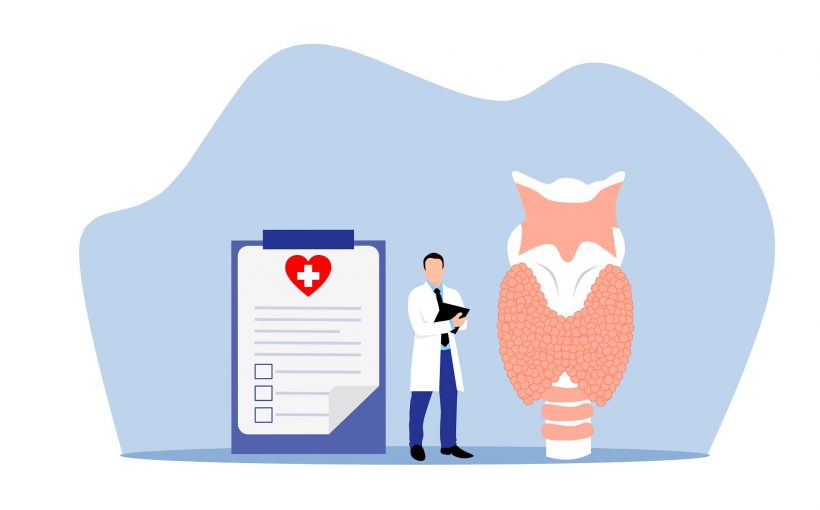
Untreated hyperthyroidism, conditions where there is excess thyroid hormone present, can adversely affect health, leading to increased risks for abnormal heart rhythms, heart failure, osteoporosis, adverse pregnancy outcomes, metabolic abnormalities and increased mortality risk.
Hyperthyroidism can occur due to several different etiologies, including Graves’ disease, toxic (overactive) thyroid nodules, and thyroiditis. It is important to recognize, correctly diagnose, and appropriately treat the underlying cause of hyperthyroidism to minimize its impacts on health.
In a review article in the Journal of the American Medical Association (JAMA), researchers from Boston University Chobanian & Avedisian School of Medicine summarize current evidence regarding the pathophysiology, clinical presentation and treatment of hyperthyroidism, focusing specifically on the management of Graves’ disease and toxic nodular disease.
“This review is a good overview of hyperthyroidism for treating clinicians, including primary care providers and endocrinologists. It includes information on pathophysiology, clinical presentation, diagnosis and treatment options for various etiologies of hyperthyroidism, as well as discussion of special cases such as subclinical hyperthyroidism, hyperthyroidism in pregnancy and thyroid storm,” says corresponding author Elizabeth N. Pearce, MD, MSc, professor of medicine at the School of Medicine and an endocrinologist at Boston Medical Center.
The researchers focused on the most up-to-date information. They included data from randomized clinical trials (RCTs), meta-analyses, systematic reviews, and observational studies and they reviewed current practice guidelines.
Among their findings:
- The most common cause of hyperthyroidism is Graves’ disease, with a global prevalence of 2% in women and 0.5% in men. Common symptoms of excess thyroid hormone activity include anxiety, insomnia, palpitations, unintentional weight loss, diarrhea and heat intolerance.
- Patients with Graves’ disease may have diffusely enlarged thyroid glands and abnormal protrusion of the eyes on exam. Patients with toxic nodules may have compressive symptoms such as difficulty swallowing, shortness of breath or voice changes.
- The etiology of thyrotoxicosis can usually be established based on clinical presentation, thyroid function tests and thyrotropin (TSH) receptor antibody status.
- Thyroid scintigraphy (a diagnostic nuclear medicine test that provides information about the structure and function of the thyroid) is recommended if thyroid nodules are present, or the etiology is unclear.
- Treatment options for overt hyperthyroidism from autonomous thyroid nodules (localized nodular lesion of the thyroid gland characterized by growth, iodine uptake and function, all independent from TSH control) or Graves’ disease include anti-thyroid drugs, radioactive iodine ablation and surgery. Treatment for subclinical hyperthyroidism is recommended for older patients and those at highest risk for osteoporosis and cardiovascular disease.
While there was limited data available, the review also briefly discussed COVID-19-related hyperthyroidism and novel therapies for hyperthyroidism such as radiofrequency ablation and biologic or immunomodulatory therapies.
More information:
Hyperthyroidism: A Review, JAMA (2023). DOI: 10.1001/jama.2023.19052
Journal information:
Journal of the American Medical Association
Source: Read Full Article
